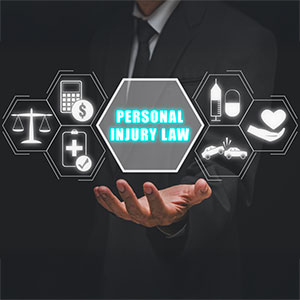How Much Is Pain And Suffering Worth?
Pain and Suffering In Florida Personal Injury and Medical Malpractice Cases
Pain and suffering is a concept that is not easy to pin down. While many jurors know that a person has suffered tremendously, even without someone directly saying it, a good personal injury attorney should tell the story of your case in a way that reaches out to the individual jurors on your case. While there are a number of different items of damages that have a fixed value in your case (i.e. property damage, past medical bills, lost income from not being able to work, etc.), pain and suffering is not a fixed value and is only limited by the sensibilities of the jurors that you have on your case.
This is why effective communication is the key to success on your case.
What Is Pain And Suffering Under Florida Law?
“Pain and suffering” under Florida law essentially rolls several elements of “non-economic damages” into one line on the verdict form. Most judges will not let you differentiate between pain and suffering, mental anguish, and loss of capacity for the enjoyment of life. This functionally makes them all the same even though, in theory, they are really not.
When a jury is asked to consider pain and suffering, the jury instructions below are what they will hear when deciding your case. I have differentiated between the instructions given in personal injury cases and wrongful death cases.
Florida Standard Civil Jury Instruction 501.2 for personal injury cases:
Any bodily injury sustained by (name) and any resulting pain and suffering [disability or physical impairment] [disfigurement] [mental anguish] [inconvenience] [or] [loss of capacity for the enjoyment of life] experienced in the past [or to be experienced in the future]. There is no exact standard for measuring such damage. The amount should be fair and just in the light of the evidence.
Florida Standard Civil Jury Instruction 502.2 for wrongful death cases:
The [(wife’s) (husband’s)] loss of (decedent’s) companionship and protection, and [her] [his] mental pain and suffering as a result of (decedent’s) injury and death. In determining the duration of the losses, you may consider the [joint life expectancy of (decedent) and (surviving spouse)] [life expectancy of (surviving spouse)] together with the other evidence in the case.
The loss by (name all eligible children) of parental companionship, instruction and guidance, and [his] [her] [their] mental pain and suffering as a result of (decedent’s) injury and death. In determining the duration of those losses, you may consider the [joint life expectancy of (decedent) and (surviving child) [each of (surviving children)]] [life expectancy of (surviving children) [each of the surviving children]] together with the other evidence in the case.
You should have noticed that there isn’t any real guidance in the law as to what these damages are and how they are valued. The most guidance (if it can be called that) is that it has to be “just in the light of the evidence” or to consider life expectancy (“together with the other evidence in the case”). This is why it is particularly important for you to testify from the heart as to your thoughts, feelings, and emotions over your loss.
It is also particularly important for your attorney to revisit this testimony from you in closing arguments (you should not forget that testimony is considered evidence). Considering that the jury is supposed to reach their verdict based on the evidence, the only evidence of pain and suffering (or mental anguish or loss of capacity for the enjoyment of life) in the case should come from the plaintiff’s own testimony.
How Do You Come Up With A Value For Pain And Suffering?
There is no defined method under the law for you to ask a jury for pain and suffering, however, most attorneys will use a per diem method (this is not the only method). In the per diem method, the attorney says to the jury that if you were to award the plaintiff only $2 per day for the rest of his or her life, then that amount would be _______ (number of days x life expectancy). The per diem usually gives the jury a baseline to consider pain and suffering.
At this point, you should remember what the jury instructions said. The instruction says “the amount should be fair and just in light of the evidence.”
If your case involves a tremendous amount of pain and suffering or other impact on your daily life, this is your time to shine. If your injury means that you need a catheter every time you have to go to the bathroom for the rest of your life or you require a colostomy bag, then how much on a daily basis should you receive to compensate you fairly? If that is your injury, there is a lot more to your injury than just the inconvenience of having to do it each time you to go the bathroom. Instead, there are questions of why me, who is going to want to be around me with this issue, and who is going to do this when I can no longer do this for myself?
To appreciate the value of this, I have a true story to share. I once had a mediator tell me in a case that the worst day of my client’s injury had to be the day that the injury happened. I disagreed with him because my client had multiple surgeries revising the original bone fracture and very significant permanent scarring.
He went ballistic when I suggested that the most painful days in her case were not the first day of the injury but were instead the days that her bone had to be re-fractured and re-set. He didn’t want to hear that even though it was true. In addition, as far as mental anguish goes, the day that the client doesn’t get to do something as simple as teach her child how to ride a bike or how to swim would be far more anguishing than the day that the injury occurred. Further, what about a day in the future when a spouse gets tired of making up for what she can’t do, causing a knock down, drag out fight? That’s a very anguishing day and may change the course of her life.
These are all things that go through the mind of someone with a serious injury and have to be made known to the jury.
Pain And Suffering Is Real
Despite everything covered above, some people just have a hard time comprehending how real pain and suffering is. Some people may never be reached on it, but most can. As unfair as it may be, my experience is that jurors will underestimate the value of pain and suffering unless significant time is spent giving them examples.
Just like the mediator I talked about above, the jurors on your case might not see the big deal when it comes to pain and suffering or mental anguish unless you show them with through your testimony. This is yet another area where you don’t get credit unless you say it. Testimony that comes from the heart and is honest will see far better returns in a courtroom than any other damage component in a personal injury or medical malpractice case.
Talk To Someone Who Has Been To Trial And Knows How To Present Your Case
Pain and suffering is often one of the biggest components of your case. It can be worth thousands to millions in some cases. If you have sustained a serious personal injury in a car accident or an incident of medical malpractice, you should contact a Lakeland personal injury attorney for a free discussion of your case and what damages an attorney thinks you can collect. We represent clients with cases in Polk County including Lakeland, Winter Haven, Bartow, and Haines City, Florida.


